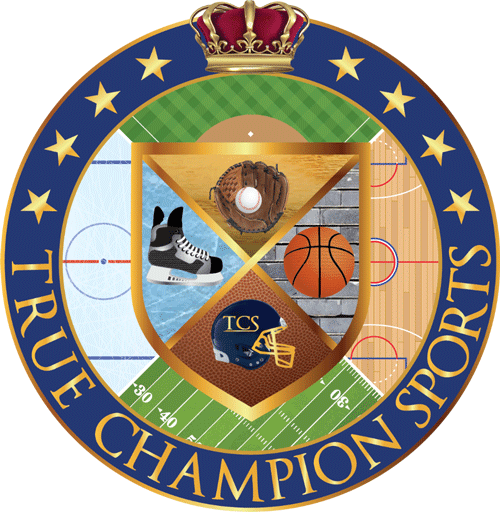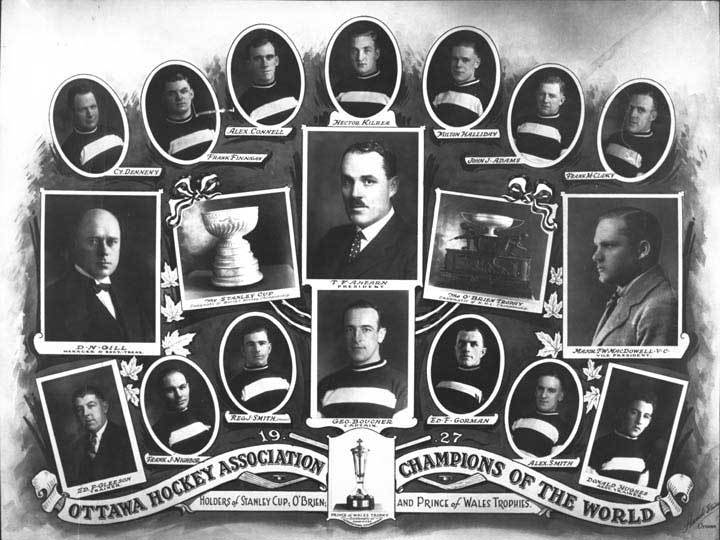Over the past 5 years I’ve spent a lot of time researching the history of the National Hockey League, and one season stands out as the most important in shaping what generations of hockey fans have known the NHL to be. I’m surprised the NHL hasn’t focused at all on educating fans about this specific year, and celebrating the 1926/27 season as the beginning of the ‘real NHL’- (for lack of a better term); at least in relation to the seasons that came before it.
Certainly there are other irreplaceable events and years that have shaped the League into its modern identity, however most of these important years tend to get at least some attention, whereas I have never heard a hockey person touch on the multitude of events that forever changed the NHL in 1926.
Other years of major impact were 1967; when the NHL doubled in size with the ‘Next Six’ expansion. Also 1979 was another year of major significance when the NHL carried out a hostile merger with the World Hockey Association and absorbed 4 of its franchises (Jets, Whalers, Oilers, Nordiques).
Nevertheless 1926 is the most important year in NHL history that you probably know very little about. A number of major events created whole-sale changes to the NHL at the time, and would lay the foundation for what the NHL came to be.
One-by-one I will outline and detail the major events of this special year which played a pivotal role in the formation of the modern NHL, and demonstrate why hockey fans ought to consider what happened prior to 1926 in a different category than all that occurred from that point onwards.
The NHL gains Control of the Stanley Cup
Prior to the 1926/27 season, the Stanley Cup had never been owned by one league.
In the earliest days of the Stanley Cup, it was called the Dominion Hockey Challenge Cup, and from 1893-1914 it was a challenge-style-trophy that was often awarded to Canada’s top ranking amateur hockey club. It was awarded by the Governor General of Canada, whom the trophy was named after, Lord Stanley of Preston. *In 1905, professional teams also became eligible to compete for the Stanley Cup.
Between 1915 and the 1925/26 season the Cup was fought over between 3 separate hockey leagues.
The National Hockey Association (NHA), which existed from 1909-1917 was the direct predecessor to the NHL- which began in its new form when the NHA shut down operations in order to rid the league of a problematic owner, and then re-started itself as the National Hockey League (NHL) later that same calendar year.
The Pacific Coast Hockey Association (PCHA) operated from 1911-1924; at which point it merged with the Western Canada Hockey League (WCHL) to form the new-and-improved Western Hockey League (WHL).
The Western (Canada) Hockey League (WCHL or WHL), existed from 1921 to 1926 and its champion competed for the Stanley Cup.
In May of 1926, the Western Hockey League folded. This left the NHL with sole control over the Stanley Cup- the 1st time one League had taken control of hockey’s most coveted trophy.
The Quality of NHL Players Dramatically Improves
Only a few years earlier, North America’s best hockey players were spread over the 3 different leagues mentioned above. Now with the Western Hockey League folding, the majority of players from these previous 2 western leagues found themselves coming eastward to continue their professional hockey careers in the National Hockey League.
This influx of talent increased the quality of play in the NHL significantly, and to fans at the time, the 1926/27 season would have presumably felt like the NHL had become an ‘all-star-league’ compared to the seasons before it.
The NHL Expands with 3 New Franchises- who go on to become half of the ‘Original Six’
With the incoming talent from the folded Western Hockey League, the NHL saw the opportunity to expand the number of franchises, and still be able to improve the quality of play as a whole. The NHL jumped from 7 teams in 1925/26 to an even 10 teams in the all-important 1926/27 season.
The 3 expansion teams added this season could not have been more influential than they turned out to be. The League expansion in 1926 saw the debuts of the New York Rangers, Chicago Blackhawks, and Detroit Cougars (who became the Red Wings a few years later). This is arguably the most important expansion-class in the history of North American sports.
The Birth of the Toronto Maple Leafs
In addition to the expansion class of the Blackhawks, Rangers, and Cougars (Red Wings franchise); the Toronto St. Patricks are sold mid-season to a group headed by Conn Smythe and immediately renamed the Toronto Maple Leafs. The NHL demanded that the Toronto Club keep their ‘St. Patricks’ identity through the end of the season, however for the 2nd half of the 1926/27 season they essentially operated with a duel nickname.
Other Notable Facts about the 1926/27 season
- The National Hockey League becomes the 1st professional sports league in North America to improvise a Divisional-Format. The 10 teams were separated into Canadian and American Divisions.
- The blue lines were significantly moved to increase the size of the neutral zone.
- Two innovations that Art Ross proposed to the NHL are accepted and instituted:
- The puck is modified to have rounded edges.
- The mesh of the net is modified to keep the puck contained when goals are scored.
- The expansion Detroit Cougars (Red Wings franchise) does not have an arena ready for their inaugural season. They play their 1st season in Windsor, Ontario at the Border Cities Arena.
- The original Ottawa Senators win their 11th and final Stanley Cup.
Concluding Thoughts
Essentially, four of the heralded ‘Original Six’ franchises were born in 1926. The NHL’s only major rival league folds, and the NHL gains all of their players, thus largely improving the quality of play. The NHL takes control of the Stanley Cup. The NHL’s top scorer (Bill Cook), top goalie (George Hainsworth), and best defenseman/ League MVP (Herb Gardiner) all played in the WHL a season earlier.
In this writer’s opinion the year 1926 along with the 1926/27 season should be viewed as the most accurate starting point of what we as fans know the NHL to be, and considered as one of the very most influential seasons in shaping the National Hockey League.
These seismic events that occurred in 1926 shaped professional hockey in North America, and the affects are still seen to this day-
What would the NHL look like without the Red Wings, Blackhawks, and Rangers? Would Toronto’s history be different if Conn Smythe never rebranded the team as the Maple Leafs?
Imagine if hockey’s history followed the path of its early days and remained similar to Major League Baseball, in that the best players were separated in 2 or 3 different leagues that only played each other in the Stanley Cup Finals?
Without the events of 1926 the National Hockey League/ professional hockey landscape in North America would have evolved in a very different way leading to a drastic present day difference.

